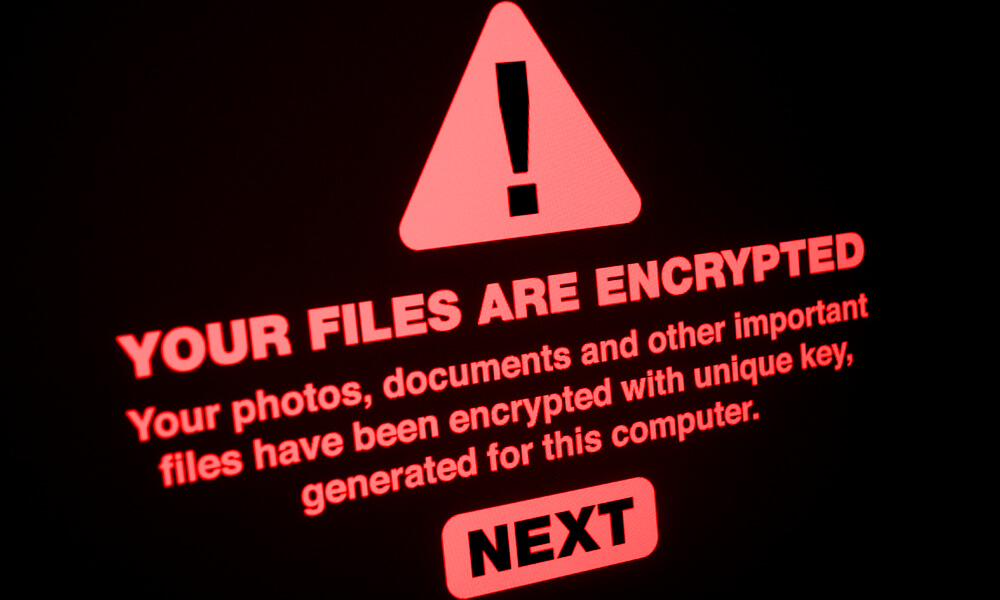What Is Ransomware
5 min read
In a few years, the term ” ransomware ” has seen a strong revival of interest on the web. Evoked by both individuals and professionals, this word has become a source of anxiety and fear. This technique, widely used by hackers, puts its targets in inextricable situations. Here is what you need to know about ransomware and the precautions necessary to protect yourself from it.
RANSOMWARE, WHAT IS IT?
Ransomware, is a computer program used to infect terminals connected to a computer system via malicious code and block your access. This malware infiltrates both your computer and your smartphone and takes all your data hostage. Almost impossible to detect during normal operation of your computer, this malware encrypts your important files and content. This type of program first appeared in Russia, before spreading all over the web. Today, the practice has become common and has been adopted by a multitude of hackers.
ENCRYPT TO TRAP YOU AND FORCE YOU TO PAY A RANSOM
The main purpose of this malware is to demand a ransom (but note: paying of the ransom does not guarantee that the problem will be solved, in fact it leads to more extortion). The encryption of your data is used as leverage to get you to respond favourably to this virtual form of blackmail. Paying the ransom allows you to obtain a key (not always) that will decrypt all of your content. Most of the time, the ransomware infiltrates through a file that you have downloaded, forgetting to choose a free antivirus. The streaming and download sites are the first centers of ransomware that are present in excess in particular via adware present (usually involuntarily) on these websites.
Others, more insidious, spread through emails. These are often the most dangerous because they can be opened at any time by a novice user who knows nothing about ransomware. In most cases, these malicious programs will attempt to extort money from you. The amounts are extremely variable and will change depending on the pirate’s ambition or the supposed value of your data. For the decryption key must generally pay the amount requested cryptocurrency ( bitcoins, Ethereumetc …). Hackers prefer this solution because it is impossible to verify the traceability of movements in crypto. However, it is strongly advised not to pay the required ransom because there is no evidence that you will find your data after payment …
RANSOMWARE LOCKER OR CRYPTO RANSOMWARE?
There are currently two types of ransomware commonly used on the web. If these two types of programs have the same purpose, they have characteristics that distinguish them.
Crypto ransomware
This first type of ransomware (which has nothing to do with cryptojacking ) aims to encrypt your most important data. Its program targets documents, images and other videos that are sensitive or that may represent any financial interest. Although it attacks files on your computer, the crypto version of the ransomware does not attack its basic functions. His goal is to put you in a state of panic to force you to respond to his request.
The hacker takes advantage of this confused state of your computer. In most cases, the program includes a countdown informing you of the payment deadline. Web hackers threaten to delete all of your files if payment is not made before the deadline. Since many users do not always find a reason to install an antivirus, which would nevertheless protect against this type of attack, files saved on a computer is easy prey for cybercriminals. Considered programs with devastating impacts, crypto-ransomware is currently among the most effective malware on the web.
Locker ransomware
This second type of ransomware focuses on the functionality of the computer and can limit access. Locker ransomware prevents you from entering your user interface or partially disables the functions of your devices. It may happen that these features are completely blocked, preventing you from interacting with the whole system.
Like the crypto version, the Locker also issues a ransom note, which you will have to pay to obtain a decryption key. Until payment is made, your computer becomes an unnecessary terminal. Unlike the first type of malware, ransom Locker does not work by encrypting your sensitive data. There is, therefore, little risk of destroying your files.
A transmission mode compatible with all terminals
Computers are not the only targets of ransomware. These hacking programs can infect both smartphones and poorly protected tablets. The absence of antivirus software is as dangerous for PCs as for any other device that can be connected to the Internet.
WHAT CONSEQUENCES FOR THE USER INFECTED WITH RANSOMWARE?
Once your computer or smartphone is infected, you cannot access your files. The consequences thus vary depending on the type of user. But they can be significant as it happened in the city of Baltimore in the United States in May 2019 (see the article Baltimore paralyzed by a computer virus on the World site) which found itself paralyzed following the infection of its systems by ransomware originally developed by the NSA and which had been patched by Microsoft for a long time. Hence the repeated importance of updating Windows (or any other OS ) and its software to avoid getting infected via known vulnerabilities.
For professionals
Professionals are the first to notice the consequences of ransomware on all of their activities. In addition to more or less significant exposure of confidential files, there is no guarantee that your data will be protected against possible extraction. The main drawback for businesses and liberal workers remains the financial aspect: ransomware makes you lose productivity. An unpredictable situation which makes you lose customers, and which also erodes their confidence in you. Adopting a computer security system will only be effective if you install it before you even connect your fleet to the Internet.
For individuals
If the average user is less exposed, he is not safe from the danger. Photos, videos, passwords and other sensitive information stored on your devices are vulnerable to hackers determined to make a financial profit. By being a victim of phishing, you run the risk of your personal information being used for malicious purposes. And in the absence of backup software, there is a good chance that the data on your smartphone or computer will be erased permanently.
HOW TO PROTECT YOURSELF FROM RANSOMWARE AND THEIR MALICIOUS ATTACKS?
In either case, installing an antivirus program remains the only truly effective source of protection against these attacks. Limiting downloads to approved, official or officially licensed platforms is also recommended to avoid the risk of infection.
Backing up your data and your operating system regularly ( backing up Windows 10 or backing up your data in the cloud ) is also recommended, especially if you have data that requires optimal protection.
As discussed in this article, it is important to constantly update your operating system and software as ransomware generally uses known vulnerabilities to infect you via these vulnerabilities. You will avoid many problems by keeping them up to date.
One last piece of advice: be careful when using your devices! Think before clicking on a link (hovering over links, for example, is a reflex to adopt to check which site you are going to) or opening an attachment received by email. Hackers generally take advantage of the credulity of users to infect their devices.





